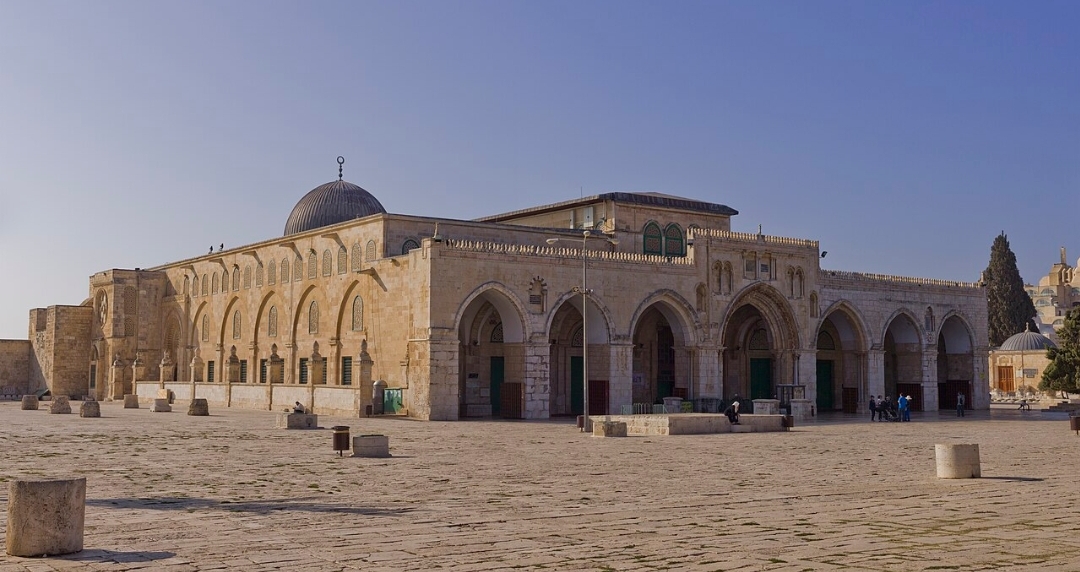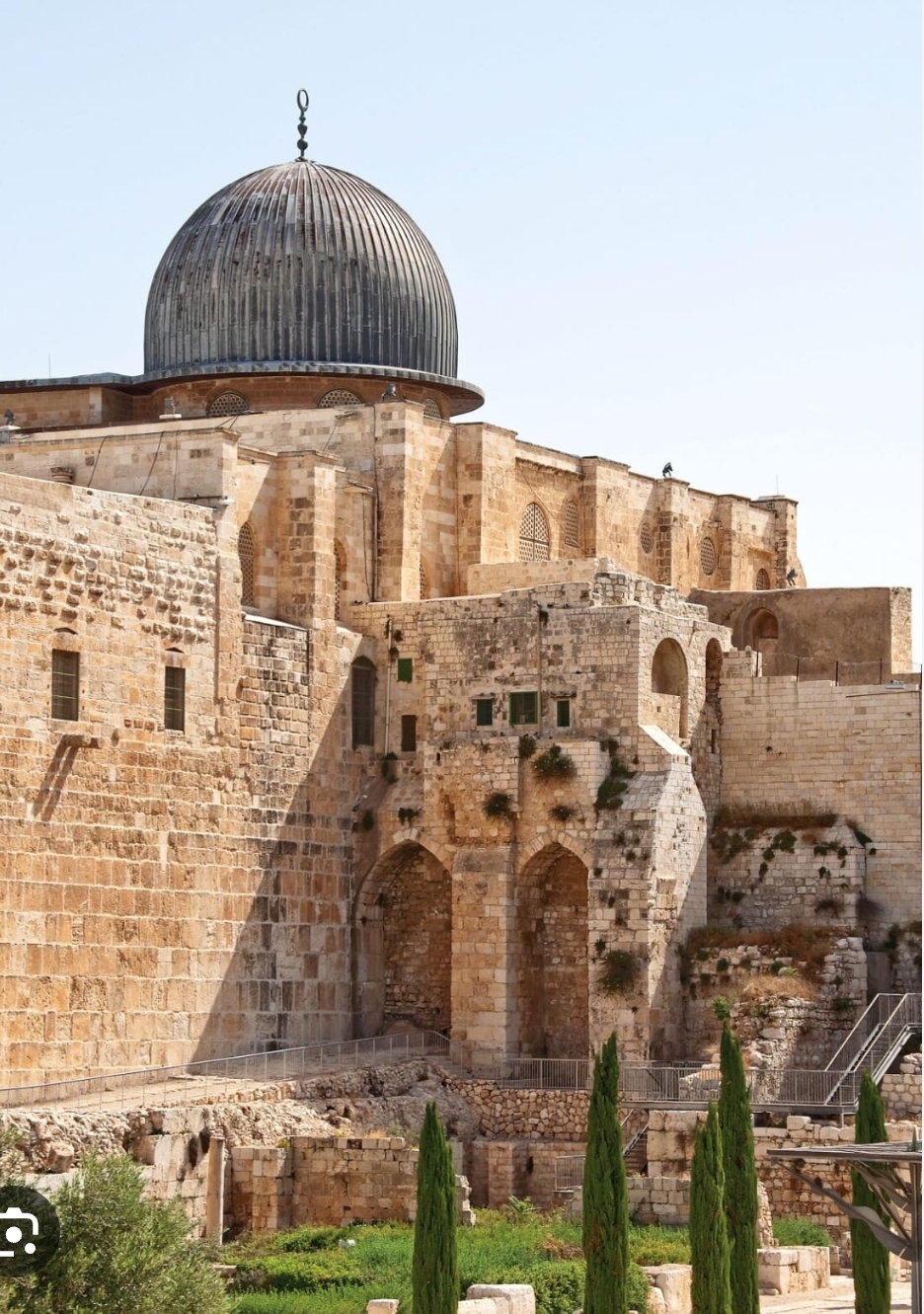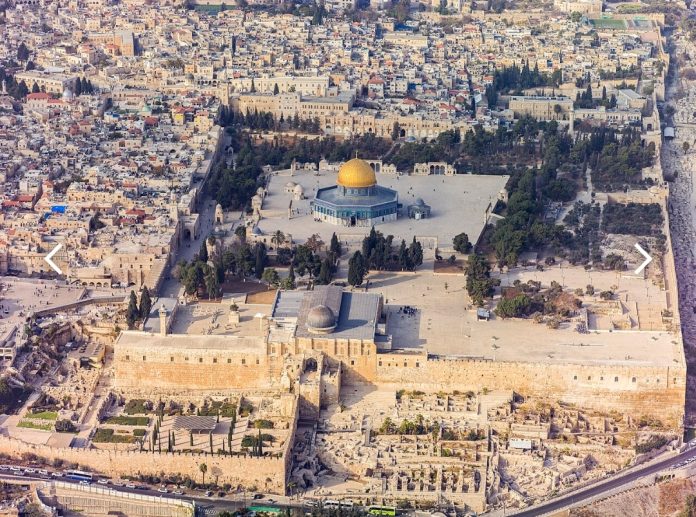The Palestinian struggle, especially by the Gaza-based resistance movement Hamas, has also been for liberating Masjid Al-Aqsa (Al-Aqsa Mosque) in East Jerusalem, the eastern flank of the capital of erstwhile Palestine, which Israel had occupied along with the West Bank, the Gaza Strip, the Sinai Peninsula in Egypt and the Golan Heights during the 1967 Arab-Israeli war.
 By Syed Khalid Husain, Singapore
By Syed Khalid Husain, Singapore
Radiance News Service
The 75-year-old struggle of the Palestinians against the Israelis has not been just for the liberation of a huge swathe of Palestinian land that the Jewish diaspora in Europe, in complicity with Britain, illegally occupied and where they established a Zionist entity called Israel in 1948.
Nor have the Arab’s various armed confrontations with Israel been only for freeing those Palestinian lands that Israel occupied during the Six-Day Arab-Israeli war in 1967.
Nor is the Palestinians’ struggle just for the removal of over 100 settlements that Israel has built, in violation of international laws, for the Jews in the occupied West Bank (a landlocked area that forms the main bulk of erstwhile Palestine), in East Jerusalem and on Golan Heights in Syria, where a total of some 700,000 Jews now live.
The Palestinian struggle, especially by the Gaza-based resistance movement Hamas, has also been for liberating Masjid Al-Aqsa (Al-Aqsa Mosque) in East Jerusalem, the eastern flank of the capital of erstwhile Palestine, which Israel had occupied along with the West Bank, the Gaza Strip, the Sinai Peninsula in Egypt and the Golan Heights during the 1967 Arab-Israeli war. While Israel returned Sinai to Egypt in 1982 following the implementation of the 1979 Egypt-Israel peace treaty, it still occupies the West Bank, the Gaza Strip and Golan Heights.
Muslims across the globe would probably not have been too much concerned had the Palestinian issue just been related to the freeing of the occupied lands like anywhere else on earth. But since Palestine has a special place in the hearts of Muslims because it is the land of many Prophets from Adam (peace be upon him) to Isa (peace be upon him) sent down by Allah Almighty and houses Masjid Al-Aqsa and several other Islamic holy places, Muslims have a special attachment with the Palestinian territory, and are deeply concerned about its uprooted people and the continued Israeli occupation of Masjid Al-Aqsa.
The ongoing “Operation Al-Aqsa Flood” armed struggle launched by the Hamas and its Izz al-Din al-Qassam Brigades has drawn more sympathy from Muslims around the world than any other earlier expedition by the Hamas or other Palestinian organisations such as the Palestinian Liberation Organisation, including the 1980s and 2000s Intifadas (uprisings) against the Israeli occupation of the West Bank and Gaza Strip. As the code name of the Hamas’ current armed operation suggests, it is specifically for the liberation of Masjid Al-Aqsa from the Israelis. Thus, this is a jihad for Al-Quds by the Hamas.
Joining the jihad
Jihad in Islam is fard kifaya, i.e. an act that, if performed even by one individual or two, will absolve the others of the neighbourhood of the obligation. But Muslims outside the Palestinian territories can participate in this jihad by helping them financially through legal relief and aid agencies, making those in authority concerned about their plight, raising voice against the oppression and atrocities and showing solidarity with them, educating the public about the Palestine issue through the mainstream and social media and, last but not the least, by supplicating for the success of the Palestinians’ struggle to liberate not just Masjid Al-Aqsa from the Jews, but all their territories occupied by Israel.
Significance of Masjid Al-Aqsa
Muslims all over the world attach great importance to Masjid Al-Aqsa, which literally means the Farthest Mosque, because of its historical and religious significance. The mosque is the third holiest shrine in Islam after Masjid Al-Haraam (the Sacred Mosque) in Makkah and Masjid An-Nabavi (the Prophet’s Mosque) in Madinah. Besides, it was the first Qibla (the direction to which Muslims turned their faces for prayers) before the Holy Kaaba, in Makkah, and the second of the two Houses of Allah on this earth after the Holy Kaaba.
 Masjid Al-Aqsa used to be the Qibla in the early years of Islam until by a Divine decree the Qibla was changed to the Kaaba in the second year of the migration of the Prophet Muhammad ﷺ to Madinah in 623/624 CE. Al-Aqsa Mosque is also associated with the Mairaj (Celestial Ascension) of the Prophet Muhammad ﷺ. The Holy Quran says: “Glory to Him (Allah) who did take His servant from the Sacred Mosque to the Farthest Mosque, whose precincts We did bless, in order that We might show him some of our signs…” (Bani Israel: 1) On the occasion of Mairaj, the Holy Prophet ﷺ also led congregational prayer of all the Prophets (peace be upon them) in Al-Aqsa Mosque.
Masjid Al-Aqsa used to be the Qibla in the early years of Islam until by a Divine decree the Qibla was changed to the Kaaba in the second year of the migration of the Prophet Muhammad ﷺ to Madinah in 623/624 CE. Al-Aqsa Mosque is also associated with the Mairaj (Celestial Ascension) of the Prophet Muhammad ﷺ. The Holy Quran says: “Glory to Him (Allah) who did take His servant from the Sacred Mosque to the Farthest Mosque, whose precincts We did bless, in order that We might show him some of our signs…” (Bani Israel: 1) On the occasion of Mairaj, the Holy Prophet ﷺ also led congregational prayer of all the Prophets (peace be upon them) in Al-Aqsa Mosque.
There are several Ahadith (sayings) of the Holy Prophet ﷺ to indicate the antiquity and holiness of Al-Aqsa Mosque. Abu Zar Ghifari reported: “I asked, ‘O Messenger of Allah ﷺ! Which mosque was first built on earth?’ He said, ‘The Sacred Mosque’. I asked, ‘Then what next?’ He said, ‘The Farthest Mosque’. I asked, ‘How long was the period between these two mosques?’ He said, ‘Forty years.’ Then he said that the entire earth is a mosque for you: so pray wherever prayer overtakes you’.” (Agreed-upon/Mishkat)
The implication is that Allah first founded the Holy Kaaba in Makkah as the Holy Quran calls it “the First House appointed for men” (Aal-Imran: 96). Afterwards, He founded Al-Aqsa Mosque. The two Houses of Allah were rebuilt on their original foundations discovered by the Prophets Ibrahim and Sulaiman (peace be upon them), respectively.
 Al-Aqsa Mosque is one of the three places of prayer of which the Holy Prophet ﷺ speaks in his Sayings. The following Saying grades the sacred status of the Sacred Mosque, the Prophet’s Mosque and the Farthest Mosque.
Al-Aqsa Mosque is one of the three places of prayer of which the Holy Prophet ﷺ speaks in his Sayings. The following Saying grades the sacred status of the Sacred Mosque, the Prophet’s Mosque and the Farthest Mosque.
“Anas bin Malik reported that the Messenger of Allah (peace be upon him) said: ‘Prayer of a man…in Al-Aqsa Mosque is prayer by 50,000 times, and his prayer in my Mosque is prayer by 50,000 times and his prayer in the Sacred Mosque is by 100,000 times’.” (Ibn Majah)
Since Al-Aqsa Mosque is situated in occupied Jerusalem, the holy city is also called Bait Al-Muqaddas (the Sanctified House), Bait Al-Maqdis (the House of Sanctuary) and Al Quds (the Sanctuary). Jerusalem also has As-Sakhra, or the Sacred Rock, on which stands Al-Qubbatus Sakhra, or the Dome of the Rock, that is the Mosque of Omar, the second Caliph, which now stands lost.
For reasons explained above, the ancient city of Jerusalem has always been venerated by Muslims. They had become sentimentally attached to it during the time of the Holy Prophet ﷺ itself and had vowed to liberate their First Qibla from the Christians. Hence after defeating the Romans in the Battle of Yarmouk (Hieromax) in 638 CE, the Muslim army marched into the territory of Palestine and Jordan. There they besieged Jerusalem. At last, Muslims succeeded in taking over the city.
Graceful takeover
This takeover was full of grace and magnanimity and speaks volumes for the greatness of the Caliph Omar (radiAllahu anhu) and his simplicity, sagacity, sense of justice and kindness to the vanquished. When the Muslims besieged the holy city, the Christians agreed to peace and reconciliation and to hand over it to the Muslims on the condition that Omar himself sign the treaty of reconciliation. When Omar, who was in Madinah at that time, was informed about this, he agreed to the terms and left for Jerusalem, leaving the affairs of the state in the hands of Ali ibn Abi Talib. Omar performed the nearly 600-mile (960km) journey to Bait Al-Maqdis on a camel.
Summing up the takeover of Jerusalem by Omar, English historian Steven Runciman, who died in 2000 aged 97, writes in his A History of the Crusades: “… the Caliph Omar entered Jerusalem, riding upon a white camel. He was dressed in worn, filthy robes and the army that followed him was rough and unkempt; but its discipline was perfect. At his side was Patriarch Sophronius, as chief magistrate of the surrendered city. Omar rode straight to the site of the… (Al-Aqsa Mosque), whence his friend Muhammad (peace be upon him) had ascended into Heaven.
“Next, the Caliph asked to see the shrines of the Christians. The Patriarch took him to the Church of Holy Sepulchre and showed all that was there. While they were in the church, the hour for prayer approached. The Caliph asked where he could spread out his prayer rug. Sophronius begged him to stay where he was; but Omar went outside to the porch of the Martyrion, for fear, he said, lest his zealous followers might claim for Islam the place wherein he had prayed. And so indeed it was. The porch was taken over by the Muslims, but the church remained…
“This was according to the terms of the city’s surrender. The Prophet (peace be upon him) himself had ordained that…the Christians… should be allowed to retain their places of worship and to use them without hindrance….”
Other details, however, indicate that Omar had only one attendant and some foodstuff and water with him on his long and tiresome journey to Jerusalem. When he reached the city, he was walking on foot and the attendant was riding the camel, for they mounted the animal by turn and it was the attendant’s turn when they reached the city.
Such was the grace and dignity with which Jerusalem was taken over by the Muslims under terms which showed reasonable consideration to let the vanquished have freedom of conscience and worship.
Omar handed over a treaty of reconciliation to the Christians of the city which guaranteed the protection of their lives and property and the freedom to practise their religion. Under the terms of this treaty and as demanded by the Christians, Omar expelled the Jews from Jerusalem. Later, the Muslims reconstructed Al-Aqsa Mosque.
Al-Quds calling again
Jerusalem remained in the hands of Muslims for some 460 years until it fell to the Crusaders in 1097. But 90 years later, on October 2, 1187, the holy city was retaken by the Muslims under the command of Salah ad-Din Yusuf ibn Ayyubi, the first sultan of both Egypt and Syria. It remained in the hands of the Muslims until the Jews occupied it after the Six-Day Arab-Israeli War 56 years ago.
They say history repeats itself. The holy city of Jerusalem, which houses not only the third holiest shrine in Islam but also several other Islamic sites, is calling again, for another struggle to recoup it with Salah ad-Din Ayyubi’s spirit and in the Caliph Omar’s tradition. Let’s hope and pray the Palestinians, with the help and Dua of Muslims around the world, succeed in their struggle this time around and liberate Masjid Al-Aqsa from the Zionists.
[The writer is senior Singapore-based journalist. He may be reached at skhusain@yahoo.com and +6591195711 (WhatsApp)]




